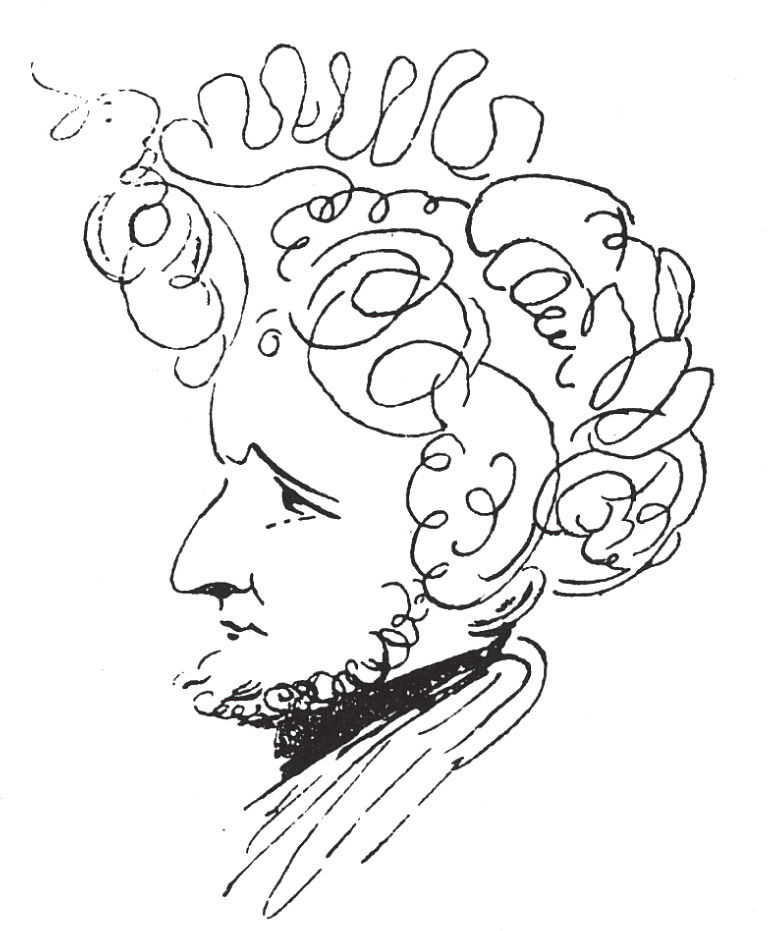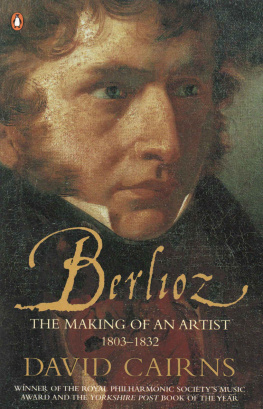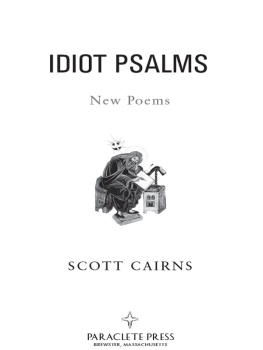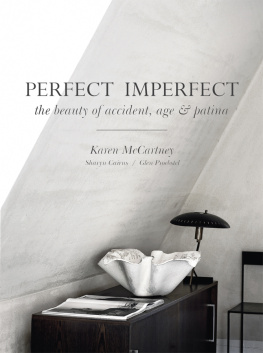
David Cairns
BERLIOZ
VOLUME ONE
The Making of an Artist 18031832

Contents
About the Author
David Cairns was chief music critic of the Sunday Times from 1983 to 1992, having earlier been music critic and arts editor of the Spectator and a writer on the Evening Standard, Financial Times and New Statesman. He has been Distinguished Visiting Professor at the University of California at Davis, a visiting scholar at the Getty Center and a visiting fellow of Merton College, Oxford. In 2013, in recognition of his services to French music, he was made Commandeur de lOrdre des Arts et des Lettres.
PENGUIN BOOKS
BERLIOZ
The Making of an Artist 18031832
One of the most insightful accounts we have of the making of a composer and one of the most beautifully written. Indeed, in its investigation of character, its leisurely encompassing of a mass of social and historical detail, it reads less like a work of dry musicology than an early nineteenth-century French novel Cairns has carefully revised the new edition to take in the latest scholarly findings Bryan Northcott, BBC Music Magazine
A great subject, marinated for 30 years in amazing scholarship and love by an outstanding writer, flawlessly presented Diana Athill, Oldie Books of the Year
A full-scale new biography has long been needed, and now comes the first volume of David Cairnss long-promised, exhaustively researched and detailed study of the composer. It has been worth the wait I would not have the book a page shorter. Volume Two cannot come soon enough, for it is already clear that Cairns is doing for Berlioz what Ernest Newman did for Wagner Michael Kennedy, Daily Telegraph
Utterly captivating The drama of Berliozs life makes him a rewarding subject for a biographer, and Mr Cairns rises confidently to the challenge the research is as deep as the best historians, and the description of music is, to an amateur reader, as convincing as the best musicologists Economist
Cairnss understanding of Berlioz rests upon a powerful imaginative identification with the man and his music as well as upon rigorous scholarship with all this goes a vivid historical sense, fastening on the crucial detail while evoking the whole colour and flavour of nineteenth-century music-making and of the characters who peopled it a book to set on the shelf beside Robert Gittings on Keats or Richard Holmes on Coleridge as a major biography of a romantic genius John Warrack, Gramophone
Ten years after the acclaimed first volume of his mammoth biography of Berlioz, David Cairns has finished the job in style since reading these two volumes I have listened to Berlioz with new ears: a biographer can earn no higher tribute Raymond Deane, Irish Times
This double-barrelled biography has helped to shift the canon of Western musical taste Boyd Tonkin, Independent
One of the finest post-war biographies in English John Whitley, Country Life
To Thomas, Daniel and Benjamin
List of Illustrations
: Berlioz c.18312: copy (by Boucher-Desnoyers) of a pen-and-ink drawing by Horace Vernet
. A page from Dr Berliozs Livre de Raison (Guy Reboul-Berlioz Collection, St Germain en Laye)
. Dr Berlioz: portrait, oil, by an unknown artist (Muse Hector Berlioz, La Cte St Andr)
. a) Cherubini: chalk drawing by Ingres, c. 18334 (Paris Conservatoire);
. b) Rossini: caricature by Mailly, c.1850 (Richard Macnutt Collection);
. c) Ftis: lithograph by Madou (Bibliothque Royale, Brussels)
. Mme Branchu as Didon in Piccinnis opera: lithograph by A. Colin, 1824 (Bibliothque Nationale de France, Dpartement des Estampes)
. Berliozs sisters: a) Adle: portrait, oil, by an unknown artist
. b) Nancy: lithograph by V. D. Cassien (both Muse Berlioz)
. Letter of 6 April 1819 to Pleyel and co. (Pleyel Collection, Paris)
. a) Quai des Orfvres
. b) Interior of the Paris Opra: engravings by Pugin and Heath, Paris and its Environs, London, 1831
. Gluck: a) portrait, oil, by J. S. Duplessis, 1776 (Oesterreichische Nationalbibliothek, Portraitsammlung, Vienna)
. b) Dune image, hlas, trop chrie (Iphignie en Tauride, Act 3): a page from Berliozs manuscript of extracts from the two Iphignie operas, copied in 1822 (Richard Macnutt Collection, Withyham)
. Title-page of Berliozs manuscript full score of Iphignie en Tauride, copied in 1824 (Pierpont Morgan Library, New York)
. Le Sueur: engraving by Quenedey, 1818 (Richard Macnutt Collection)
. Spontini: lithograph by Grevedon, 1830, inscribed by the composer (Muse Berlioz)
. Letter of 31 August 1824 to Dr Berlioz (Guy Reboul-Berlioz Collection)
. Charles Kemble and Harriet Smithson in Romeo and Juliet, Tomb Scene: lithograph by Francis, 1827 (V&A Picture Library)
. A page from Berliozs Memoirs recalling the performances of Hamlet and Romeo and Juliet in Paris in 1827 (Pierpont Morgan Library)
. Beethoven: a) life mask by Franz Klein, 1812 (Beethovenhaus, Bonn)
. b) Landante de la symphonie en la: watercolour by Eugne Lami, 1840 (formerly Andr Meyer Collection, Paris)
. Eight Scenes from Faust: a) title-page of the full score, Paris, 1829
. b) part of the autograph bassoon part for The Tale of a Rat and The Tale of a Flea (Bibliothque Nationale de France, Dpartement de la Musique)
. A page of the autograph full score of Berliozs Cloptre (Bibliothque Nationale de France, Dpartement de la Musique)
. a) Harriet Smithson as Ophelia, Hamlet, Act 4, scene 5: lithograph by Devria and Boulanger, 1827
. b) Marie Pleyel (Camille Moke) at the piano, woodcut by an unknown artist (Muses de la ville de Strasbourg)
. Camille Moke: lithograph by Alophe, c.1831 (Richard Macnutt Collection)
. a) Villa Medici, Rome
. b) Mendelssohn: pencil drawing by Eduard Bendermann, 1833 (Staatsbibliothek, Berlin)
. Italy: a) Landscape near Rome with the Ponte Molle, 1645, oil, by Claude Lorrain (Birmingham Museums and Art Gallery)
. b) View of Olevano, 1827, oil, by Jean-Baptiste Corot (Ashmolean Museum, Oxford)
. Horace Vernet: self-portrait, oil (Duc dElchingen Collection?)
. Berlioz: undated drawing, possibly by Ingres (formerly Reboul-Berlioz Collection)
. Handbill for Berliozs concert of 9 December 1832 (Richard Macnutt Collection)
Thanks are due to the following for permission to reproduce the above-named illustrations: The Association Nationale Hector Berlioz ().

Berlioz
c.18312: copy (by Boucher-Desnoyers) of a pen-and-ink drawing by Horace Vernet
Preface
This book goes back to the winter of 196970, when Tom Rosenthal, then a director of Thames and Hudson, suggested that I follow up my edition of Berliozs Memoirs by writing a full-scale life. Tom was to prove an untiringly patient friend and ally and a vital source of encouragement throughout the years more of them than either of us envisaged between the inception of the project and the completion of its first part. He would have had to wait longer but for the generosity of Kern Holoman, chairman of the music department at the University of California, Davis, one of the worlds leading Berlioz scholars and himself engaged on a major life-and-works, who arranged for me to spend two terms in Davis as a visiting professor. Over a third of the book was drafted during this timely break in my career as a journalist. I also owe a profound debt of gratitude to Yvonne Reboul-Berlioz, who gave me unrestricted access to the large collection of family documents belonging to her late husband (a great-grandson of Berliozs sister Nancy) and made me welcome at her Paris apartment in the Rue du Ranelagh. It was in the many weeks spent going through the letters, diaries and account books of the Reboul Collection that I began to get a picture of the environment from which the composer sprang, and the idea of the book I should write about him first took shape.
Next page











 Berlioz c.18312: copy (by Boucher-Desnoyers) of a pen-and-ink drawing by Horace Vernet
Berlioz c.18312: copy (by Boucher-Desnoyers) of a pen-and-ink drawing by Horace Vernet